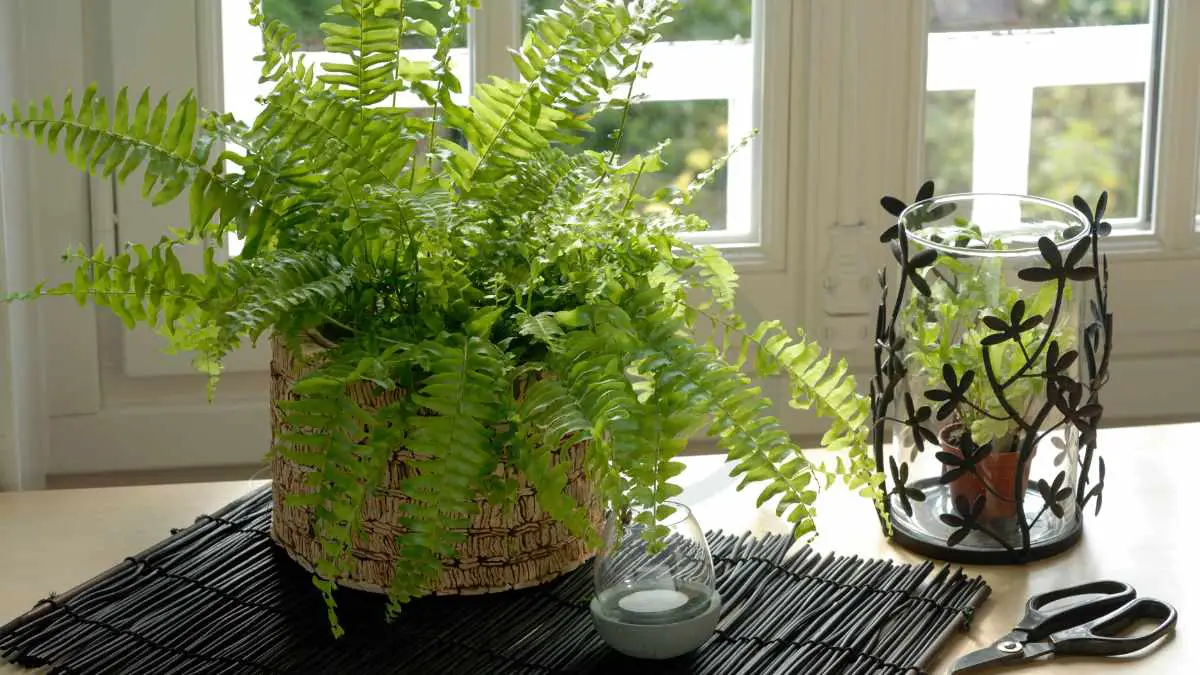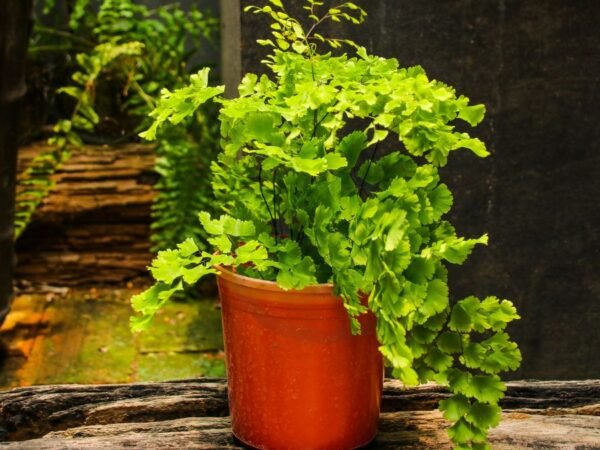"How big do Boston ferns get?" is a common question among plant enthusiasts, and I'm here to provide all the answers you need. As an experienced gardener, I can assure you that understanding the growth potential of Boston ferns is essential for their proper care and maintenance.
Boston ferns typically reach a size of 1 to 3 feet in height and width, making them ideal for hanging baskets or as floor plants in indoor spaces. However, under optimal conditions, some specimens can grow even larger, spanning up to 4 feet in both height and width. It's important to note that the size of Boston ferns can vary depending on factors such as environmental conditions, care practices, and the specific cultivar.
If you're looking to cultivate Boston ferns, I have a wealth of information to share on their care, propagation, and troubleshooting common issues. Whether you're a seasoned gardener or just starting out, there's always more to learn about these beautiful and versatile plants.
Key Takeaways
- Regular Pruning: Trim your Boston fern regularly to control its size and promote healthy growth.
- Proper Watering: Ensure your Boston fern receives consistent watering to help manage its size and prevent wilting or stunted growth.
- Appropriate Lighting: Position your Boston fern in a location with indirect sunlight to maintain its size and lush appearance.
- Fertilization Routine: Implement a fertilization schedule to support the growth of your Boston fern without encouraging excessive size.
- Monitor for Pests: Keep an eye out for pests that can affect the health and size of your Boston fern, addressing any issues promptly.
- Consider Division: If your Boston fern becomes too large, consider dividing it into smaller plants to better manage its size and spread.
Boston Fern Overview
Growth Potential
Boston ferns can grow up to 3 feet in height and width, reaching their full size within a few years. They progress from small seedlings to mature plants gradually.
Size Range
The typical height of Boston ferns ranges from 1 to 3 feet, with widths spanning a similar range. Different Boston fern plants may exhibit slight variations in size due to genetic factors.
Environmental conditions such as light exposure and humidity levels play a significant role in determining the size of Boston ferns. In ideal settings, they can achieve their maximum growth potential.
Influencing Factors
Factors like light intensity, temperature, humidity, and soil quality impact the growth of Boston ferns. External conditions such as consistent watering and proper fertilization are crucial for their development.
Boston ferns thrive in indirect sunlight with high humidity levels. Adequate moisture and occasional misting help maintain their lush foliage. Proper care is essential for optimal growth.
Planting Boston Ferns

Ideal Locations
Boston ferns thrive indoors in areas with indirect sunlight, making them ideal for rooms with filtered light. They also flourish in bathrooms due to the high humidity levels. Placing them near windows can provide the necessary light without direct exposure that could harm the plant.
Choosing the right spot is crucial for Boston ferns to reach their full potential. Avoid placing them in direct sunlight, as this can scorch their delicate fronds. The size of Boston ferns can vary based on their environment, with those in optimal conditions growing larger and more vibrant.
Planting Techniques
To plant Boston ferns successfully, ensure the soil is well-draining and rich in organic matter. Begin by selecting a pot with drainage holes to prevent waterlogging. Gently remove the fern from its nursery pot, being careful not to damage the roots.
Planting techniques involve gently spreading out the roots before covering them with soil. Ensure that the crown of the plant sits just above the soil level to prevent rotting. Water thoroughly after planting and maintain consistent moisture levels to support healthy growth.
Key Growth Factors
Light Requirements
Boston ferns require indirect sunlight to thrive, making them ideal for shaded areas. Insufficient light can lead to stunted growth and yellowing fronds. Providing adequate light exposure is crucial for the Boston fern's overall health and development.
To ensure healthy growth, place your Boston fern in a spot where it receives bright, filtered light but avoid direct sunlight. This will help maintain the plant's vibrant green color and promote lush foliage.
Soil and Water
When it comes to soil, Boston ferns prefer a well-draining, nutrient-rich mix. Good soil quality is essential for supporting the fern's root system and promoting robust growth. Overly compacted or waterlogged soil can lead to root rot and hinder the plant's development.
In terms of watering, Boston ferns thrive in consistently moist soil. It's important to keep the soil evenly moist but not soggy. Watering should be done when the top inch of the soil feels slightly dry to the touch.
Temperature and Humidity
Maintaining an optimal temperature range of 60-75°F (15-24°C) is crucial for Boston ferns' growth. Extreme temperatures can stress the plant and affect its overall health. These ferns thrive in high humidity levels, ideally between 50-80%.
To create a suitable environment for your Boston fern, consider using a humidifier or placing a tray filled with water near the plant to increase moisture levels in the air. Regular misting can also help maintain adequate humidity levels.
Proper Care Practices
Fertilizing Techniques
Boston ferns thrive with proper fertilization to support healthy growth and lush foliage. Utilize a balanced liquid fertilizer rich in nitrogen to nourish the fern adequately. Apply the fertilizer monthly during the growing season for optimal results.
Enhance the Boston fern's vitality by understanding the importance of fertilization. Adequate feeding ensures robust growth and vibrant green fronds. Avoid over-fertilizing, which can lead to burning of the plant's roots and negatively impact its health.
To promote Boston fern development, adopt the best fertilizing techniques available. Consider using a diluted liquid fertilizer to prevent root damage. Water the plant thoroughly after fertilizing to aid in nutrient absorption and overall health.
Pruning Methods
Explore various pruning methods to manage the size and appearance of your Boston fern effectively. Regular pruning helps maintain an ideal shape and prevents overcrowding. Trim any yellow or dead fronds to encourage new growth.
Learn how pruning can contribute to maintaining healthy Boston ferns throughout their lifecycle. Removing damaged or discolored fronds enhances air circulation around the plant, reducing the risk of diseases. Prune away any brown tips regularly for a neat and tidy appearance.
Understand the significance of consistent pruning in preserving your Boston fern's overall health. Trimming back excessive growth promotes new frond development and prevents the plant from becoming unruly. Regularly inspect your fern for signs of overgrowth and prune as needed.
Managing Fern Size

Potting Essentials
Boston ferns can grow quite large, reaching up to three feet in height and width. To manage their size effectively, it's crucial to understand the potting essentials. When selecting pots for Boston ferns, opt for containers that are slightly larger than the current root ball. Adequate drainage holes are essential to prevent waterlogging, which can lead to root rot.
Proper potting is vital for the growth of Boston ferns. Use a well-draining soil mix rich in organic matter to provide the necessary nutrients. Ensure that the fern is potted at the same depth as it was in its previous container to avoid issues with over-watering or drying out.
Repotting Tips
Mastering repotting techniques is key to maintaining healthy Boston ferns and managing their size. Knowing when and how to repot is crucial. Typically, repotting every 1-2 years is recommended to prevent overcrowding of roots and promote continued growth.
When repotting, gently remove the fern from its current container and inspect the roots. Trim any brown or mushy roots before placing the plant in a new pot with fresh soil. Repotting not only allows for better nutrient absorption but also provides more space for root expansion.
Understanding the benefits of repotting is essential for fern care. It helps refresh the soil, eliminate compacted roots, and promotes overall healthier growth. By providing a larger container during repotting, you allow room for the fern's roots to spread out and access more nutrients from the soil.
Controlling Growth
Growth Control Techniques
Boston ferns can grow quite large if left unchecked, but there are effective techniques to manage their size. Pruning is a key method to control growth, cutting back older fronds to encourage new growth and maintain a compact shape. Regularly removing dead or yellowing fronds helps the plant allocate resources more efficiently.
To further regulate the size of Boston ferns, repotting is essential. When the roots become overcrowded in the current pot, it's time to repot into a slightly larger container. This process allows the plant to continue growing without becoming root-bound, promoting healthier growth and preventing stunted development.
Maintaining consistent watering is crucial for controlling the growth of Boston ferns. Overwatering can lead to rapid growth spurts, while underwatering can stunt growth. Finding the right balance by ensuring proper drainage and monitoring soil moisture levels is key to keeping your Boston fern at an optimal size.
In addition to these techniques, providing adequate light is essential for managing the growth of Boston ferns. While they thrive in indirect sunlight, too much direct sun can cause them to grow excessively. Finding a suitable location with bright, filtered light will help maintain a healthy size for your fern.
Regularly fertilizing your Boston fern with a balanced fertilizer can also impact its growth rate. By providing essential nutrients in moderation, you can promote steady growth without encouraging excessive expansion. Following a regular fertilizing schedule tailored to your plant's needs is vital for maintaining its size.
Pests and Problems
Common Issues
Boston ferns may face pest infestations such as spider mites, mealybugs, or scale insects that can damage foliage. These pests often thrive in dry conditions, so maintaining proper humidity levels is crucial. Yellowing leaves can indicate overwatering or underwatering, affecting the plant's overall health. Brown tips on fronds are usually a sign of low humidity or insufficient watering.
Addressing these issues promptly is essential to prevent further damage to the Boston fern. Pruning affected areas, adjusting watering schedules, and increasing humidity levels can help combat these common problems. Ensuring adequate air circulation around the plant can also prevent pest infestations and fungal diseases.
Solutions
To combat pest infestations, consider using natural remedies like neem oil or insecticidal soap to protect your Boston fern without harmful chemicals. Regularly inspect the plant for signs of pests and remove them promptly to prevent spreading. Isolating infected plants can help contain the issue and protect other nearby plants from infestation.
For yellowing leaves, adjust your watering routine by ensuring the soil is moist but not waterlogged. Proper drainage is crucial to prevent root rot, a common issue in overwatered Boston ferns. Misting the leaves or placing a humidifier nearby can help increase humidity levels and revive the plant's health.
Propagation Strategies
Propagating Successfully
To propagate Boston ferns successfully, start by selecting a healthy parent plant with lush foliage. Carefully divide the root ball into smaller sections, ensuring each division has both roots and fronds. Place these divisions in a suitable potting mix that retains moisture well.
Master the techniques for successfully propagating Boston ferns by keeping the soil consistently moist but not waterlogged. Ensure the new plants receive bright, indirect light to support their growth. Regularly mist the young ferns to maintain humidity levels around them.
Learn how to propagate Boston ferns by utilizing methods such as division or spore propagation. When dividing the plant, gently separate the roots while being mindful of not damaging them. For spore propagation, collect mature spores from the underside of fronds and sow them in a sterile growing medium.
Understand the steps involved in propagating Boston ferns for optimal results by providing a warm and humid environment. Consider using a clear plastic bag to create a mini greenhouse effect that promotes spore germination. Monitor the moisture levels closely to prevent drying out or overwatering.
Types of Boston Ferns
'Dallas' Fern
The 'Dallas' Fern variety is known for its delicate, lacy fronds that cascade gracefully. Its vibrant green foliage adds a touch of elegance to any space. When fully mature, this fern can reach a size of around 3 feet in both height and width.
To ensure optimal growth, 'Dallas' Ferns require indirect light and consistently moist soil. Regular misting helps maintain the humidity levels that these ferns thrive in. Pruning dead or yellowing fronds can promote new growth and keep the plant looking healthy.
'Kimberly Queen' Fern
The 'Kimberly Queen' Fern stands out for its upright and tidy growth habit, making it a popular choice for indoor and outdoor settings alike. This fern can grow up to 4 feet tall and wide, creating a lush and full appearance.
For 'Kimberly Queen' Ferns to flourish, they need bright, indirect light and well-draining soil. Regular watering is crucial to keep the soil consistently moist but not waterlogged. Removing any yellow or withered fronds helps the plant channel its energy into new growth.
Closing Thoughts
By understanding the key growth factors, proper care practices, and effective management techniques for Boston ferns, you can ensure optimal growth and maintain their size. Remember to monitor for pests, apply suitable propagation strategies, and choose the right type of Boston fern for your space. Implement these strategies to enjoy healthy, thriving ferns that enhance your indoor or outdoor environment.
Take action today by applying these insights to your Boston fern care routine. Share this knowledge with fellow plant enthusiasts to help them cultivate lush and vibrant ferns too. With the right approach, you can create a green oasis that brings beauty and tranquility to your surroundings.
Frequently Asked Questions
How big can Boston Ferns grow?
Boston Ferns can grow up to 2 to 3 feet in height and width, creating a lush and full appearance. Regular pruning can help manage their size and maintain a compact shape.
What are the key growth factors for Boston Ferns?
Key growth factors for Boston Ferns include adequate light (bright, indirect sunlight), consistent watering (moist soil but not waterlogged), high humidity levels, and regular feeding with a balanced fertilizer.
How can I control the size of my Boston Fern?
To manage the size of your Boston Fern, prune regularly by trimming back old fronds and removing any damaged or dead foliage. You can also divide the plant to control its growth or repot it into a slightly smaller container.
What are common pests and problems that affect Boston Ferns?
Common pests that may affect Boston Ferns include spider mites, scale insects, and mealybugs. Problems such as yellowing fronds, leaf drop, or brown tips can indicate issues like overwatering, underwatering, low humidity levels, or inadequate light.
What are some effective propagation strategies for Boston Ferns?
Boston Ferns can be propagated through division or spores. To propagate through division, carefully separate the rhizomes during repotting. For spore propagation, collect mature spores from the undersides of fronds and sow them in a suitable growing medium.
Image Source: Paid image from CANVA





